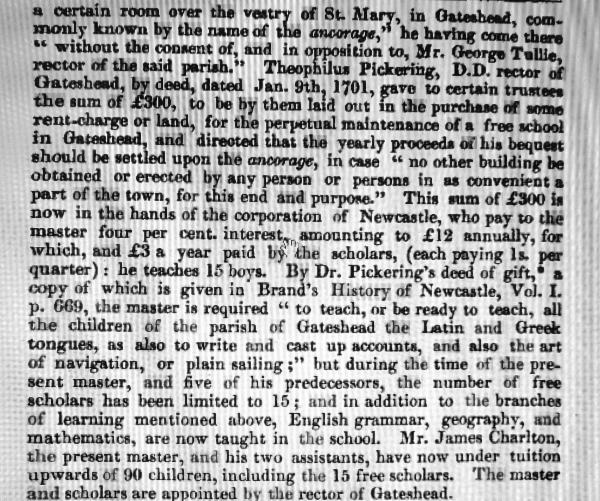Anchorage
The following is from the text of "The Gentleman's Magazine"
This is a digital copy of a book that was preserved for generations on library shelves before it was carefully scanned by Google as part of a project to make the world's books discoverable online.
This is a digital copy of a book that was preserved for generations on library shelves before it was carefully scanned by Google as part of a project to make the world's books discoverable online.
In Durham Cathedral was a ** goodly
fidr porch called the Anchoridge, with an
altar for a monk to say daily mass, being
in ancient times inhabited by an anchorite,
whereunto the priors were wont much to
finsquent, to hear the high mass, standing
BO conveniently unto the high altar ; the
entrance was up a fair pair of stairs, &c."
At Gateshead the ''Anchorage" is a
tolerably large apartment above the vestry.
The Bishop's licence for assigning a space
in the cemetery of Gateshead contiguous
to the church, for the purpose of building
a residence and therein " shutting up ^*
an anchoritess, was obtained in 1 34 0. The
conditions of the consent of the rector
and parishioners, and the leaving a com-
petent place for burial of the dead, were
annexed. After the Reformation the
anchorage was used as an almshouse and
afterwards for the Anchorage School.
Certainly these doubly-storied Ycstries
were not for chapter-houses or muniment-
rooms to collegiate churches. In the
North of England they are as *' plenty as
blackberries." The upper room is some-
times approached from the lower one, and
often has squints towards the altar. At
other times it has had a separate entrance
from the exterior. I have seen squints
from the lower apartment. At Wath,
near Ripon, an old chimney remains in
the arrangement.
That many anchorites were so only in
name is evident from the anchorages in
frequented places, such as at Tyne Bridge;
the crossing of the old Durham road over
the stream at Eighton banks, oo. Durham ;
the cell of a woman anchorite attached to
St. Edmund's Chapel, or ** Ankerkirke,"
in the thoroughfare of Frenchgate, at
Richmond; and another, " Ankriohe," in a
vacant space in the heart of the same town.
I wish some one would thoroughly in-
vestigate our buildings called vestries.
That all were anchorages can scarcely be
believed ; but that many were, and that
both rooms were (sometimes, at all events)
used for the purpose, seems highly pro-
bable. Yours, &c.
W. HtLTON LONOSTAPPB.
